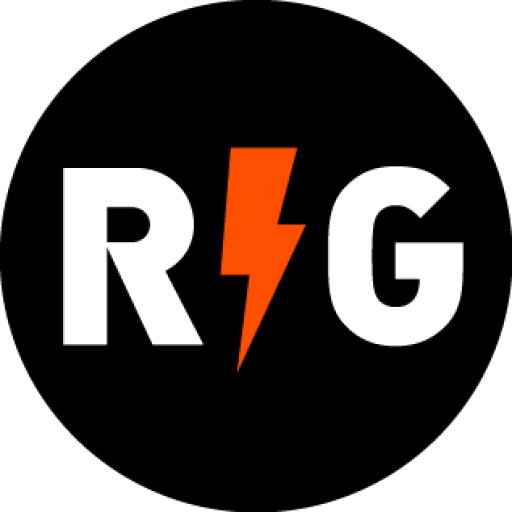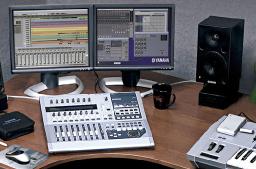

@rg
Home Recording - Modern-Day Developments

We live in the digital age. Everywhere around us technology is changing the way we work, play, and communicate. The computer has become a fixture in the home, and it's hard to imagine life without one. The need to create coupled with advancements in technology are allowing even the average hobbyist the chance to create and share quality music without going into considerable debt.
The Advancement of Technology
Analog multitrack recorders capable of recording twenty-four or more tracks can cost a lot of money. Even now, though they are less popular, it is easy to spend $30,000 to $50,000 on a good one. Their prohibitive cost meant that for a while, home studios were available only to rich, successful musicians. Digital technology has brought the cost down considerably. Digital tape machines such as the ADAT, while not cheap, are nowhere near as expensive as multitrack analog tape machines. When they were introduced in 1992, Alesis ADATs went for around $3,500. These modular tape machines started showing up in professional studios, and more and more home studios were getting equipped with digital recorders.
As the technology and time advanced, recording studios turned to the personal computer. Digital audio can be stored on its internal hard drives, and the monitor and mouse take editing to a whole new level. Software provides an interface for laying out tracks and editing them visually in ways that were never possible in the analog or digital tape world. As we discuss in later chapters, digital audio uses nonlinear technology. This means that the audio is free to be placed anywhere in time, unlike a tape-based machine on which you record at a specific point in the tape. Unless you cut out that section of tape and splice it somewhere else, you can't move things around with analog tape. But with digital audio, moving audio is as easy as pointing and clicking.
Using computers in studios came with its own problems: The computers themselves were not able to handle the tremendous strain that digital audio required. To a computer's brain (the central processing unit, or CPU), digital audio is very complex to work with. The addition of signal processing was too much for the computers of the late 1980s and early 1990s to handle. The solution was to use add-on cards inside the computer to help process the digital audio signal. One of the most successful products is Digidesign's Pro Tools. Pro Tools uses a combination of hardware to perform digital signal processing (DSP) and software to arrange music. Professional Pro Tools and other systems like it are still very expensive. It's easy to spend $30,000 to $50,000 on a nice Pro Tools rig. Pro Tools was one of the first proprietary systems available, a combination of software and hardware for recording music in a computer. Today Pro Tools is the standard in recording studios around the world. Other systems exist today, but none with the popularity and compatibility of Pro Tools.
How Technology Made the Home Studio Possible
The home studio has followed a path similar to that of professional recording studios. In 1979, Tascam invented the Portastudio, a 4-track recorder that used standard audiotapes. It was priced around $1,000, which was very inexpensive for a unit of its type. It caused a revolution, and in one step created the home studio market. The unit was small and compact and could be taken anywhere. Four tracks could be recorded and mixed separately in the unit and later mixed down to a final stereo cassette. Musicians quickly began using the Portastudio for creating their own music and making demos. The Portastudio line by Tascam is still popular today and comes in many shapes and sizes, both digital and analog.
In the digital world, in the 1990s, the hard disk began showing up as part of standalone recorders, greatly increasing the quality of recorded sound. Because hard disks were able to hold more data, they became a viable solution to storing digital audio. Digital audio is very large: each monophonic track takes 5 megabytes of memory per minute. A typical ten-minute song consisting of eight tracks requires 400 megabytes of storage space. By today's standards that's not very much, but in the early 1990s most home computers shipped with 500-megabyte drives, total! As the computer grew in popularity and power, it became feasible for a computer with a simple audio interface to handle the demands of digital audio without the need for additional DSP cards. Computer recording software such as Cubase, Digital Performer, Sonar and Logic answered the call by providing MIDI (musical instrument digital interface) and digital audio in one package. Computer recording software is immensely popular because of its ease of use, relatively low cost, and the power of what you can achieve with just your home computer.
What does all this history mean for you and your home studio? Being able to layer track upon track is a critical part of the home studio experience, especially if you work alone. Many bands record albums one layer at a time for greater control.

Your most quite welcome! I'll be posting more on the subject soon.
Just wanted to thank Ronnie for these kind of articles. As a relative novice in home recording, having some historical perspective allows better understanding. I appreciate this kind of information.